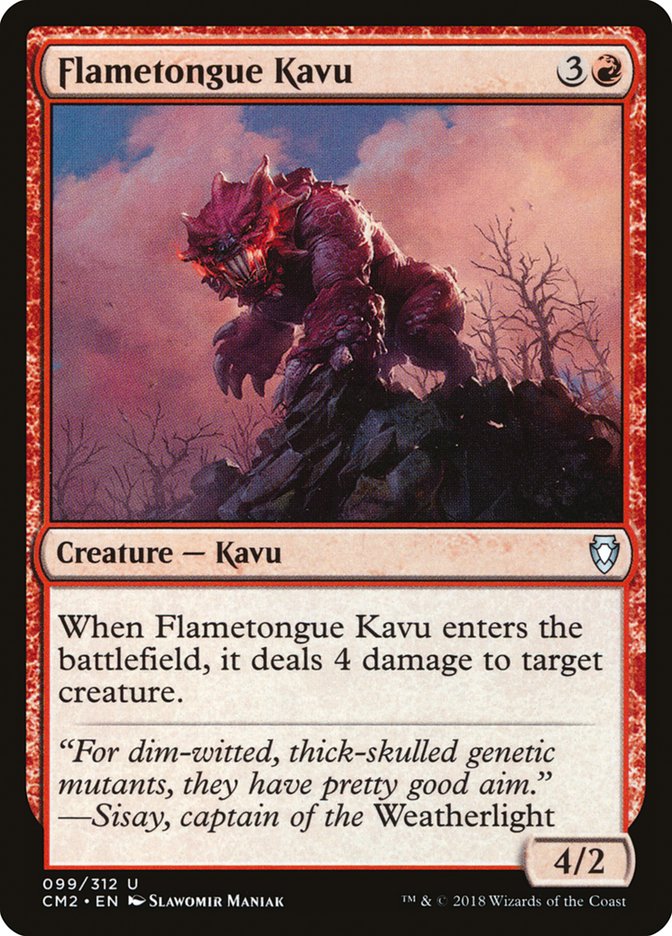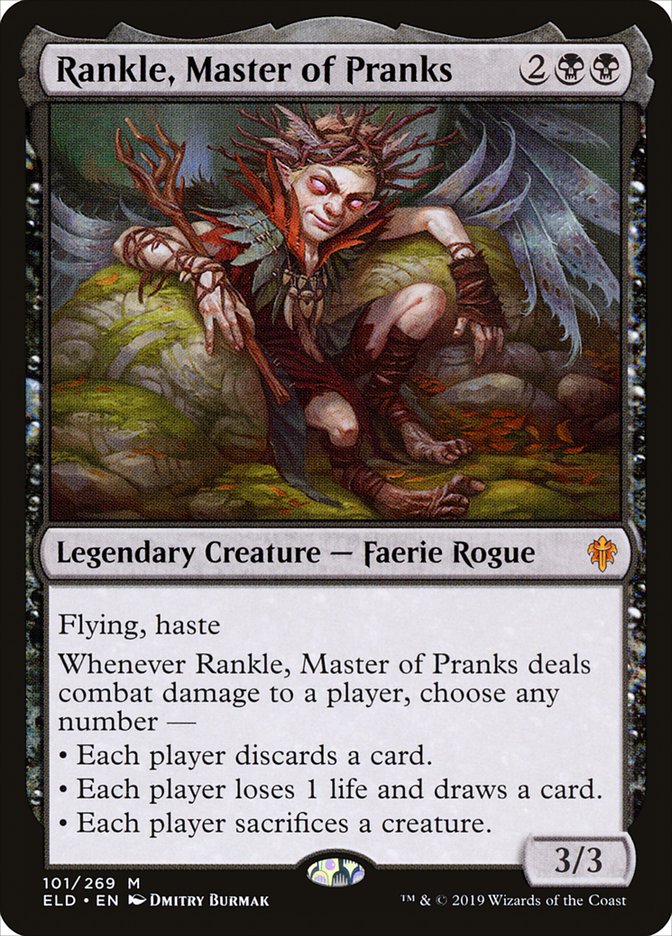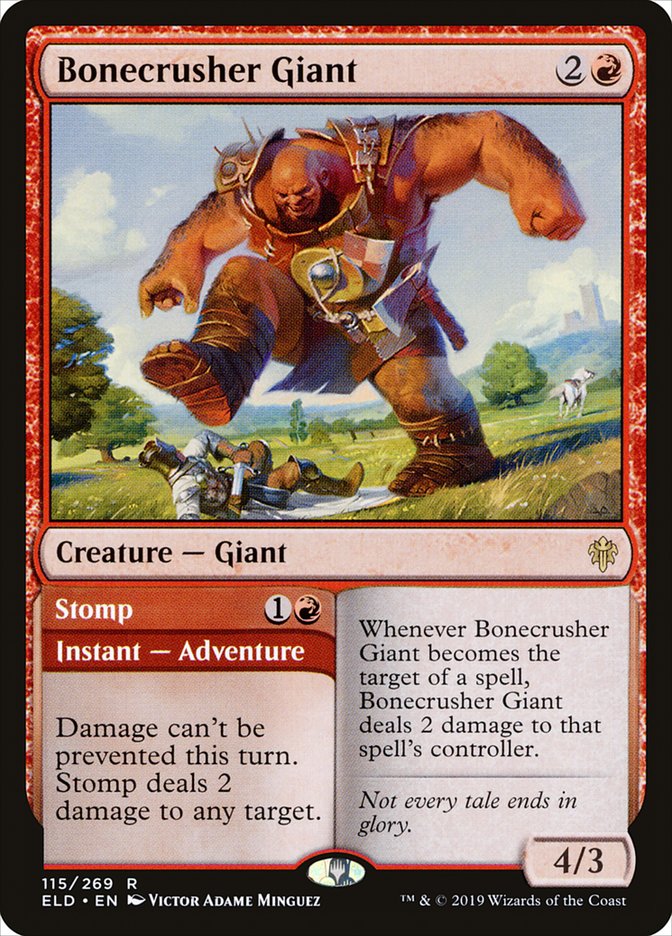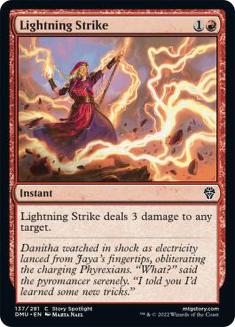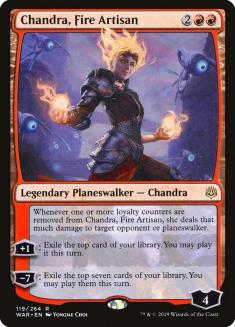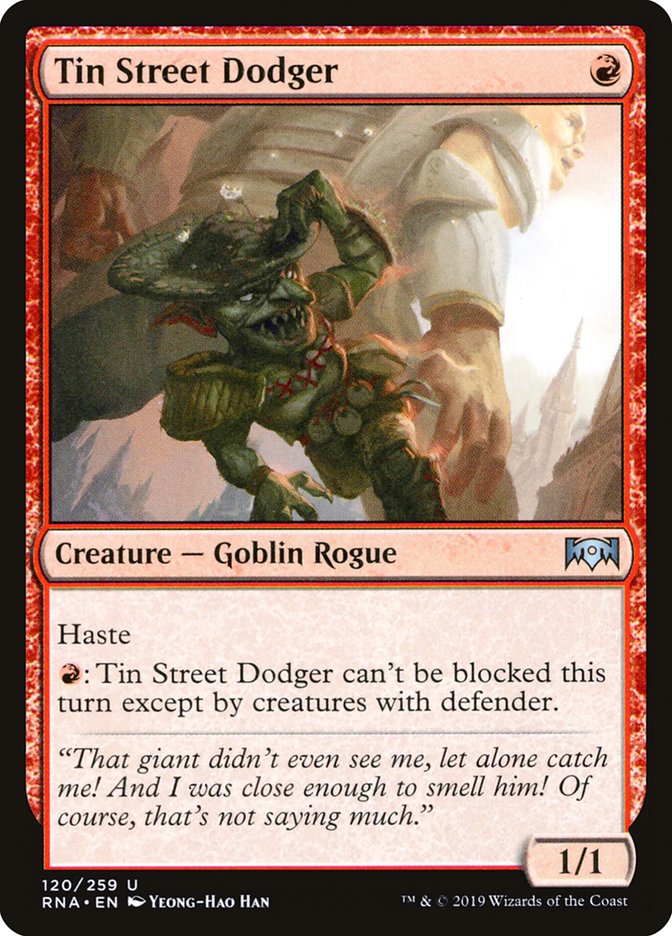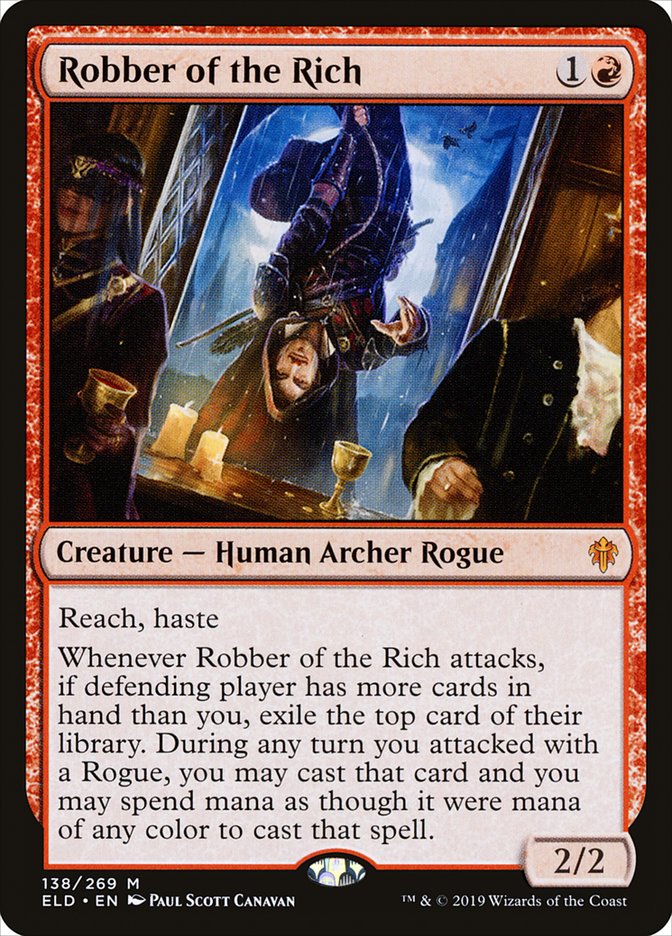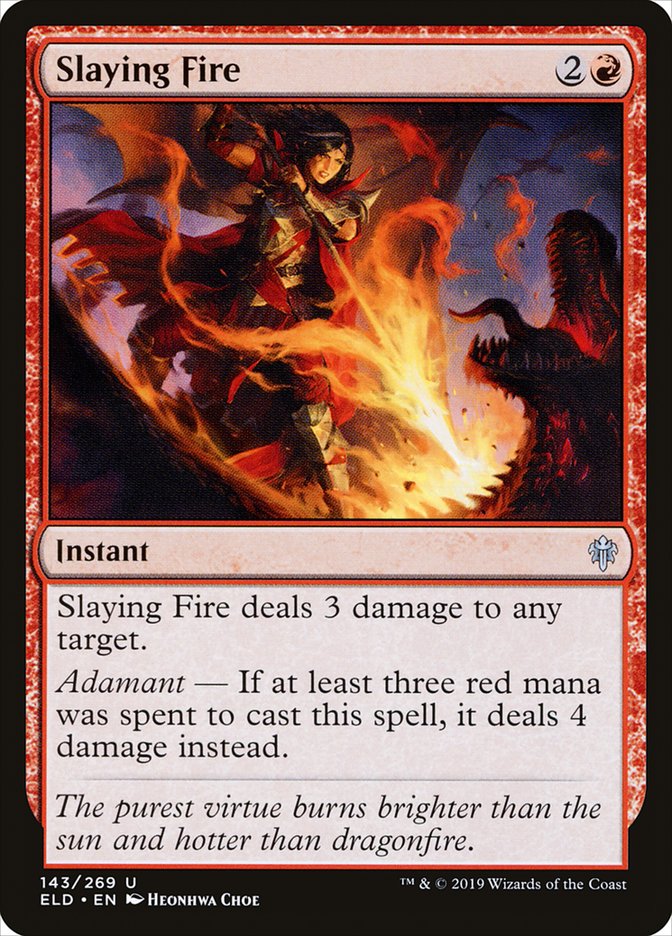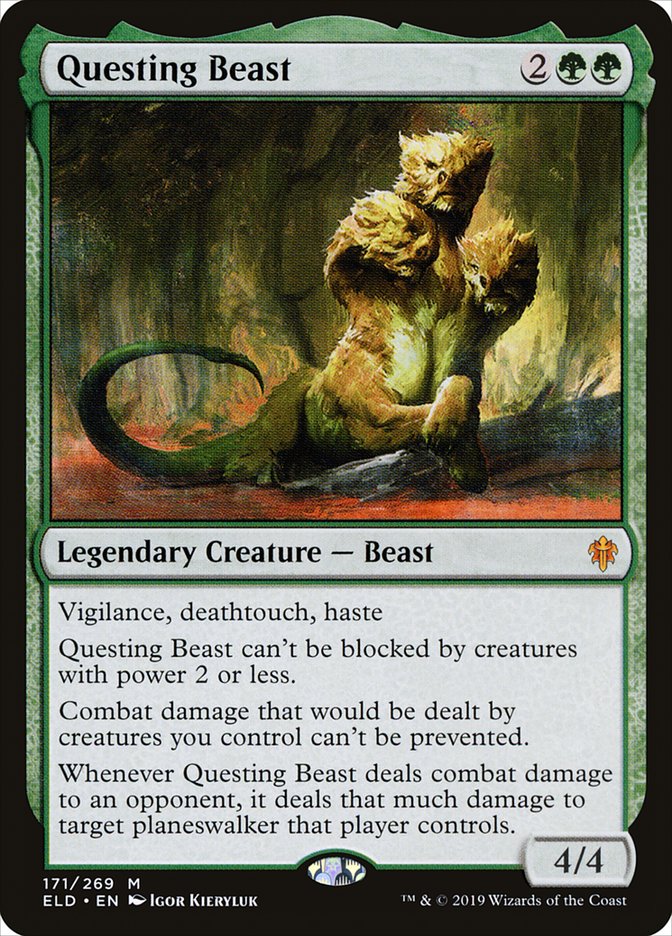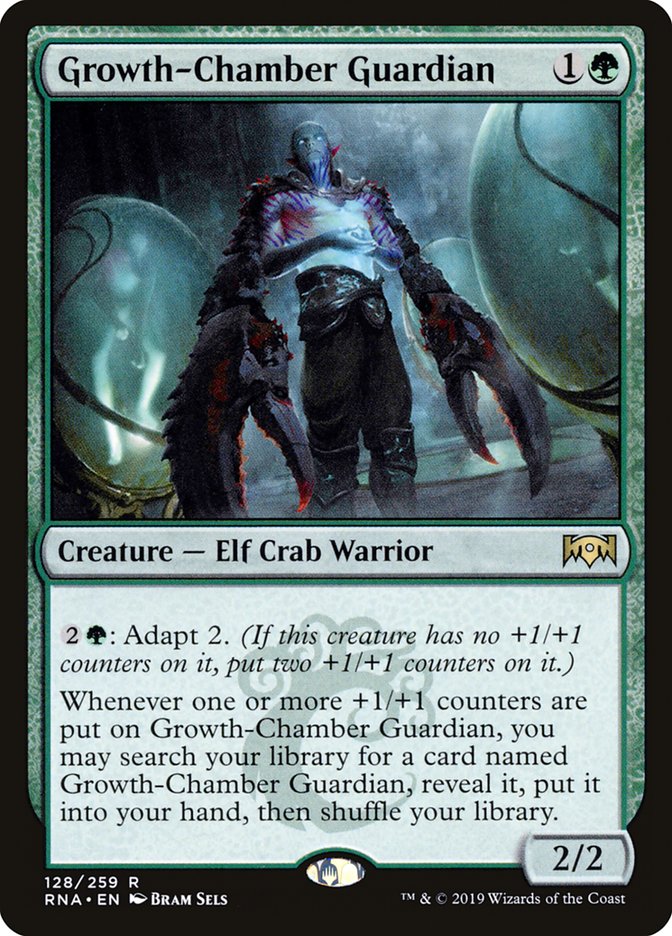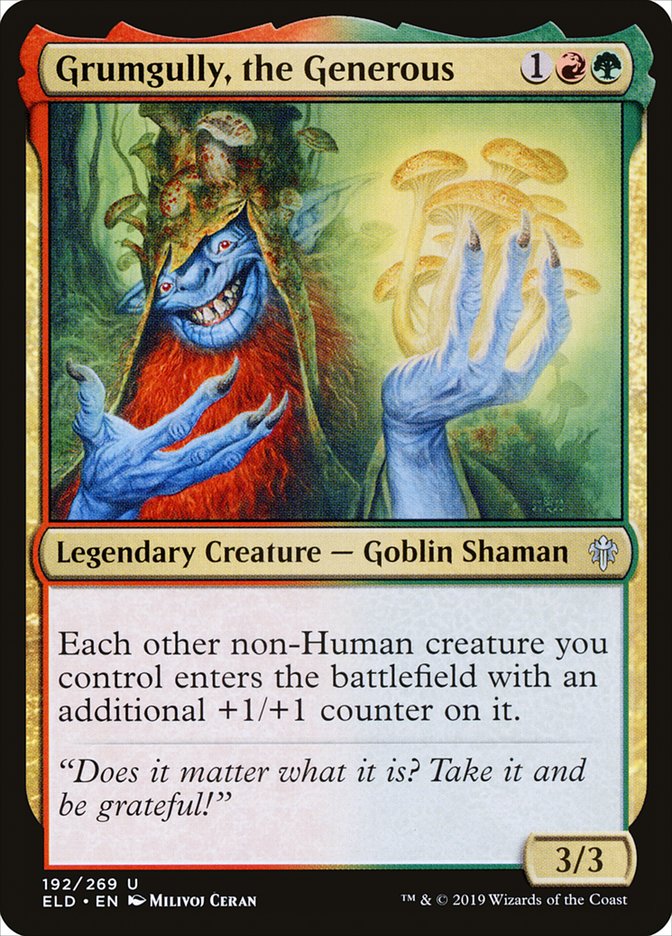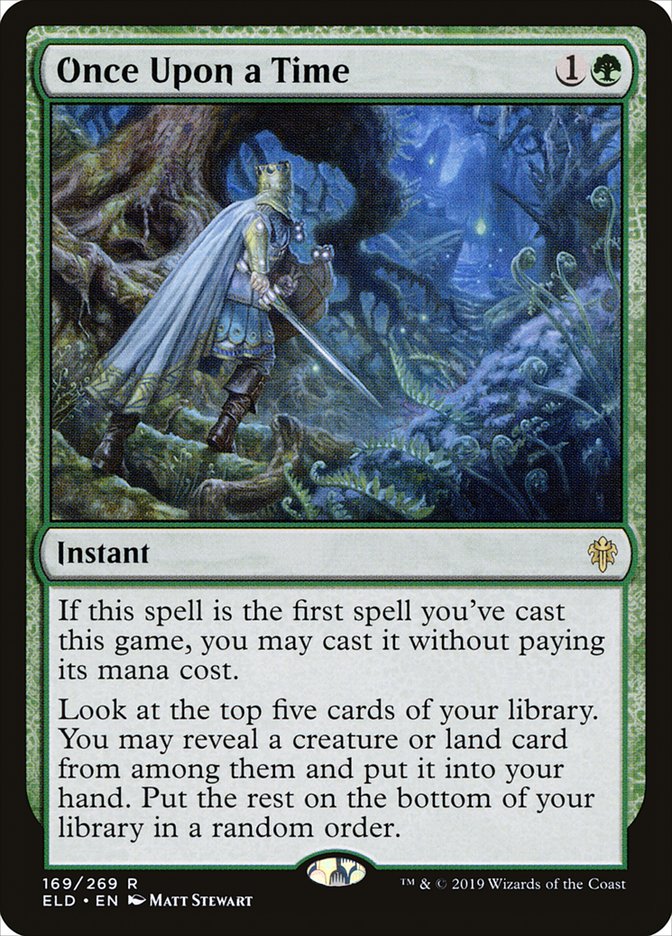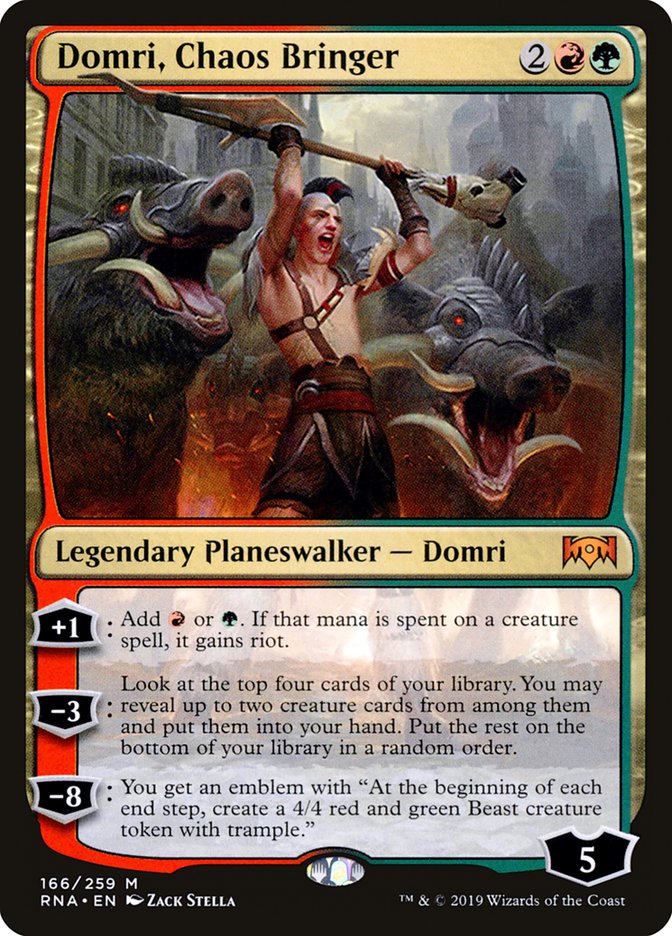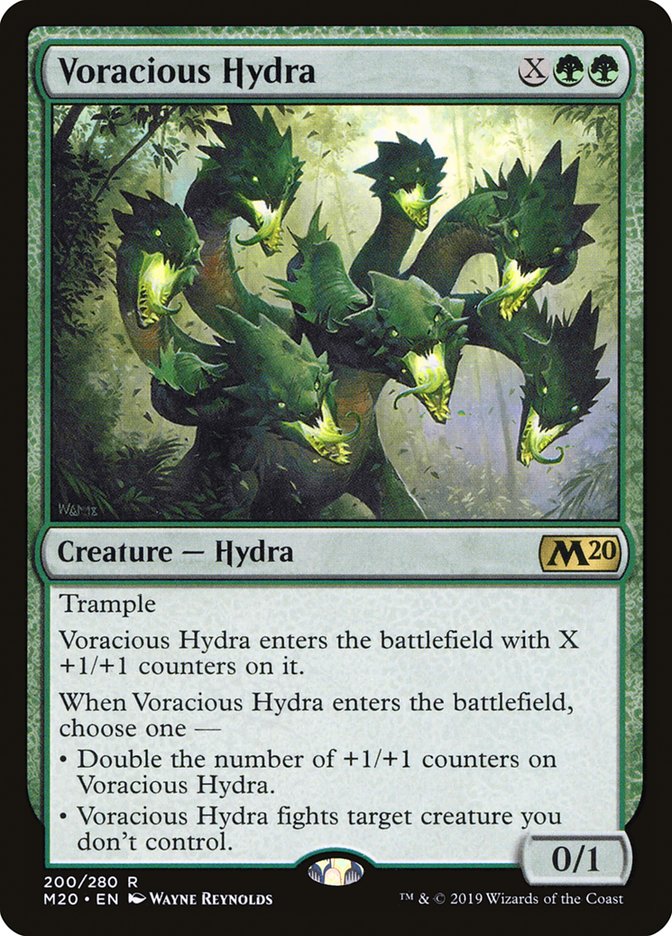When I talked about Rankle, Master of Pranks
a couple of weeks ago
, I talked about a concept that’s called the Flametongue Kavu effect. What
the Flametongue Kavu effect means is that there are times in which a card
is so ubiquitously played and so oppressive to a specific class of cards
that everything that matches up poorly against it automatically becomes
bad, which forces everyone to adapt during deckbuilding. Recent examples of
the Flametongue Kavu effect are Goblin Chainwhirler and Teferi, Time
Raveler. Just like you wouldn’t play a four-drop that died to Flametongue
Kavu when it was legal and played by everyone, you also wouldn’t play a
three-drop that just died to Goblin Chainwhirler at the height of the
Rakdos Midrange dominance.
I also mentioned that it wasn’t that likely that Rankle, Master of Pranks
would have the Flametongue Kavu effect in the format because the
deckbuilding restriction it presented meant it couldn’t just be thrown in
any deck.
Enter Bonecrusher Giant, a card that has even more potential to cause a
Flametongue Kavu effect, as it has the same oppressiveness towards a class
of card while having none of the restrictions from Rankle, Master of
Pranks.
If Bonecrusher Giant becomes heavily played, this could spell doom for
every creature with two toughness. Can you imagine, for example, playing a
Turn 2 Hero of Precinct One and have your opponent Stomp it at the end of
the turn? That’s a giant beating, and it would force everyone to adapt to
it during deckbuilding. The key here is that, unlike Rankle, Bonecrusher
Giant can just be played in any deck, and it very likely will, because it’s
one of the most powerful cards we’ve seen in Throne of Eldraine.
When you’re analyzing Bonecrusher Giant, I think it’s more valuable to just
see it as a removal spell first rather than as a creature. Imagine this
card:
1R
Instant
Deal 2 damage to any target.
Draw a card.
This is a pretty good card, right?
That’s what Bonecrusher Giant is, except the card you’re drawing is always
Bonecrusher Giant. Bonecrusher Giant the creature is probably not going to
be the best card in your deck, but a 4/3 creature for three mana with an
added bonus might not be the worst card in your deck either, and you’re
guaranteed to always draw a spell, which is much better later in the game.
Past that, there are also some more upsides on Bonecrusher Giant:
Bonecrusher Giant is a Curve by Itself
The fact that one single card is both your two-drop and your three-drop
means there’s a lot less strain on the other cards in your opening hand to
fill out your curve, and it increases the range of hands you can keep,
since, by itself, it guarantees you are going to have a solid early game.
When you’re filling out the curve of your deck, it takes up spots in both
the two-slot and the three-slot, which is very valuable since these are
usually the slots that you want to fill the most. For example, take a look
at this hand that you’ve already mulliganed once:
This hand is kinda awkward. It just doesn’t do much but you’ve already
mulliganed once, so you’re not going to mulligan to five. You’re going to
send back a Mountain and try to win the game with your two spells. Now,
imagine instead of Lightning Strike you have a different two-mana burn
spell:
Suddenly, this becomes a good hand! It doesn’t matter that much that you
only have two spells because Bonecrusher Giant is the same two-mana burn
spell that you had before, except with a three-drop added onto it. This is
huge!
Bonecrusher Giant is Flexible
There’s the flexibility of just playing it as a 4/3 creature for three
without going through the hoops of playing Stomp first. You do miss out on
the 2-for-1 value, but it’s something you’re going to want to do if you’re
simply curving out creatures, especially against a control deck where the
two damage might not be very relevant early on.
But Bonecrusher Giant’s flexibility isn’t just in casting the card. As with
any Adventure card, it makes it easier to interact with your spells. It
allows you to, for example, use cards like Once Upon a Time to find a
removal spell, or cards like Find // Finality or Teferi, Time Raveler to
get it back.
Stomp Stops Damage from Being Prevented this Turn
This doesn’t seem to be very relevant right now – Simic Nexus is the only
deck that plays Root Snare and that’s rotating – but the presence of Stomp
will ensure that you trump anyone who is playing this sort of strategy.
Stomp puts Bonecrusher Giant into Exile
After casting Stomp, you don’t actually draw Bonecrusher Giant. You place
it into exile. This is a bonus that is unlikely to come up much but that
will be very relevant when it does. First, it means they can’t make you
discard it from your hand with something like Thought Erasure. If you’re on
the play and they Thought Erasure you on Turn 2, you guarantee that you can
cast your three-drop the following turn. Second, it doesn’t count as a card
in your hand for Robber of the Rich, which is a card you’re going to want
to play a lot of the time alongside Bonecrusher Giant. Third, it can be
played through Experimental Frenzy, since it’s not in your hand.
So, where exactly would I play Bonecrusher Giant? I believe I would play it
in every deck that had the ability to cast it, but here are some potential
Bonecrusher Giant decks for you to start with:
Creatures (24)
- 4 Ember Hauler
- 4 Runaway Steam-Kin
- 4 Tin Street Dodger
- 4 Scorch Spitter
- 4 Robber of the Rich
- 4 Bonecrusher Giant
Planeswalkers (1)
Lands (20)
Spells (15)

The one-drops in this deck are a bit lackluster, but I think they’re the
best we’ve got post-rotation and it’s not like Fanatical Firebrand was
incredible either. Further, Tin Street Dodger might be better than it looks
since it’s a Rogue and therefore triggers Robber of the Rich. Currently,
there are no good Knights in Red, so Fervent Champion isn’t very
interesting, but if they release another good Red Knight, it could also be
added to the deck. Regardless, Bonecrusher Giant is a really good card
here, since you’re very interested in the two damage.
Another Throne of Eldraine addition is Slaying Fire, which I think
is quite a good card even with two Mobilized District in your deck; instant
speed four-damage to the opponent is a lot of damage. It’s possible that in
the end the deck just wants to play four of those, as it’s also a really
good card to cast again with Chandra, Acolyte of Flame. Between Ember
Hauler, Slaying Fire, Chandra, Fire Artisan, Bonecrusher Giant, and Shock,
this deck has a lot of reach.
Here’s a more aggressive version of the deck (I suspect the above version
is better, but this goldfishes faster):
Creatures (25)
- 4 Chandra's Spitfire
- 4 Runaway Steam-Kin
- 4 Tin Street Dodger
- 4 Scorch Spitter
- 3 Robber of the Rich
- 2 Gingerbrute
- 4 Bonecrusher Giant
Lands (20)
Spells (15)

This is a more aggressive version of the deck that focuses around the
interaction between Chandra’s Spitfire and Cavalcade of Calamity – every
time a one-power creature attacks (including the Spitfire) you ping them
for one which gives the Spitfire +3/+0. It’s possible to focus even more on
Cavalcade of Calamity by playing the full four Gingerbrutes and possibly
even Fervent Champion, but I don’t think you need to do that.
Another option is adding Green and making the deck a little less focused,
but more powerful:
Creatures (30)
- 4 Gruul Spellbreaker
- 2 Skarrgan Hellkite
- 4 Growth-Chamber Guardian
- 3 Zhur-Taa Goblin
- 4 Paradise Druid
- 3 Voracious Hydra
- 4 Questing Beast
- 4 Bonecrusher Giant
- 2 Grumgully, the Generous
Planeswalkers (1)
Lands (23)
Spells (6)
Sideboard

There are a lot of things I like going on with this deck, as the power
level of the cards is very high (really, have you read Questing Beast?). A
lot of the creatures in the deck have haste, which should be pretty good
versus any Planeswalker decks, and they also mostly have more than two
toughness. Growth-Chamber Guardian fell out of favor mostly due to Legion’s
End, but I’m not sure people are going to play that as much if Bant
Scapeshift and Orzhov Vampires aren’t a thing; if they do, you probably
don’t want to play Growth-Chamber Guardian. It’s also possible
Growth-Chamber Guardian is just not good enough in a Bonecrusher Giant
world, but I want to try the interaction between Growth-Chamber Guardian
and Grumgully, the Generous before I dismiss it, and there aren’t many
other two-drops I’m interested in (I’d likely just end up playing another
mana creature, which could be the right move anyway).
I also like that this deck has a lot of creatures, so Once Upon a Time and
Domri, Chaos Bringer are very likely to hit, but a lot of these creatures
are removal spell in disguise – both Bonecrusher Giant and Voracious Hydra
are removal spells that you can search for. There’s a chance a more
Planeswalker-heavy version that eschews the creature-matter cards is
viable, but the fact that there are so many powerful creatures that act as
removal spells makes me interested in maximizing this even more. How would
that look like?
Creatures (26)
- 4 Gruul Spellbreaker
- 2 Skarrgan Hellkite
- 4 Incubation Druid
- 4 Paradise Druid
- 4 Voracious Hydra
- 4 Questing Beast
- 4 Bonecrusher Giant
Planeswalkers (5)
Lands (23)
Spells (6)
Sideboard

Between eight mana creatures and four Once Upon a Time, we should hit a
two-drop accelerant pretty consistently, which should let us play more
copies of Domri, Chaos Bringer. I think I like this version more than the
previous one – it’s less aggressive but the cards are overall more powerful
and it seems more cohesive.
This is not the extent of where you can play Bonecrusher Giant. It’s
certainly better in an aggressive deck, since the 4/3 body and the two
damage are more relevant, but I honestly think it’s just good in any Red
deck, even control, because in the end it’s just a removal spell. Take, for
example, Jeskai Planeswalkers. That’s a deck that often runs Shock or
Lightning Strike and there’s a chance Bonecrusher Giant is just better than
both. You don’t need or even want to play a 4/3 creature for three, but
sometimes you just don’t draw a good curve or the game goes long, and then
all of a sudden your removal spell becomes a creature on top of it. And
that’s not even to mention the fact that sometimes you’ll be able to use
Teferi, Time Raveler to bounce your Bonecrusher Giant and get your burn
spell back. If the format adapts too much and no two-toughness creatures
are played, control is not going to want it, but if 2/2s are still out
there, it will be a strong addition.
In the end, I really think Bonecrusher Giant is so flexible and so strong
that it has the potential to warp the format around it. I suggest you
include it in every single Red deck you build as a starting point and also
that you consider its existence in the decks that can’t play it.


